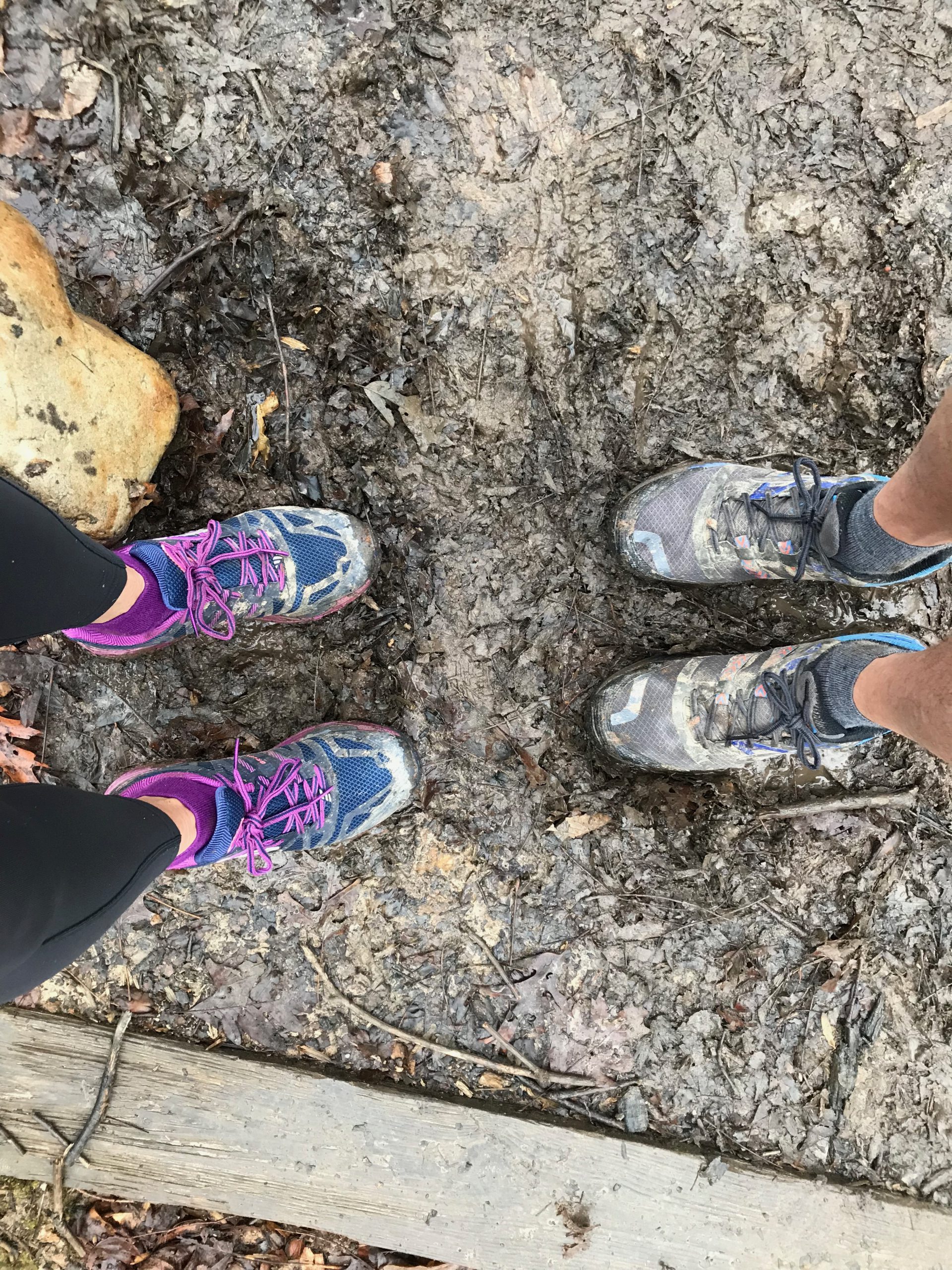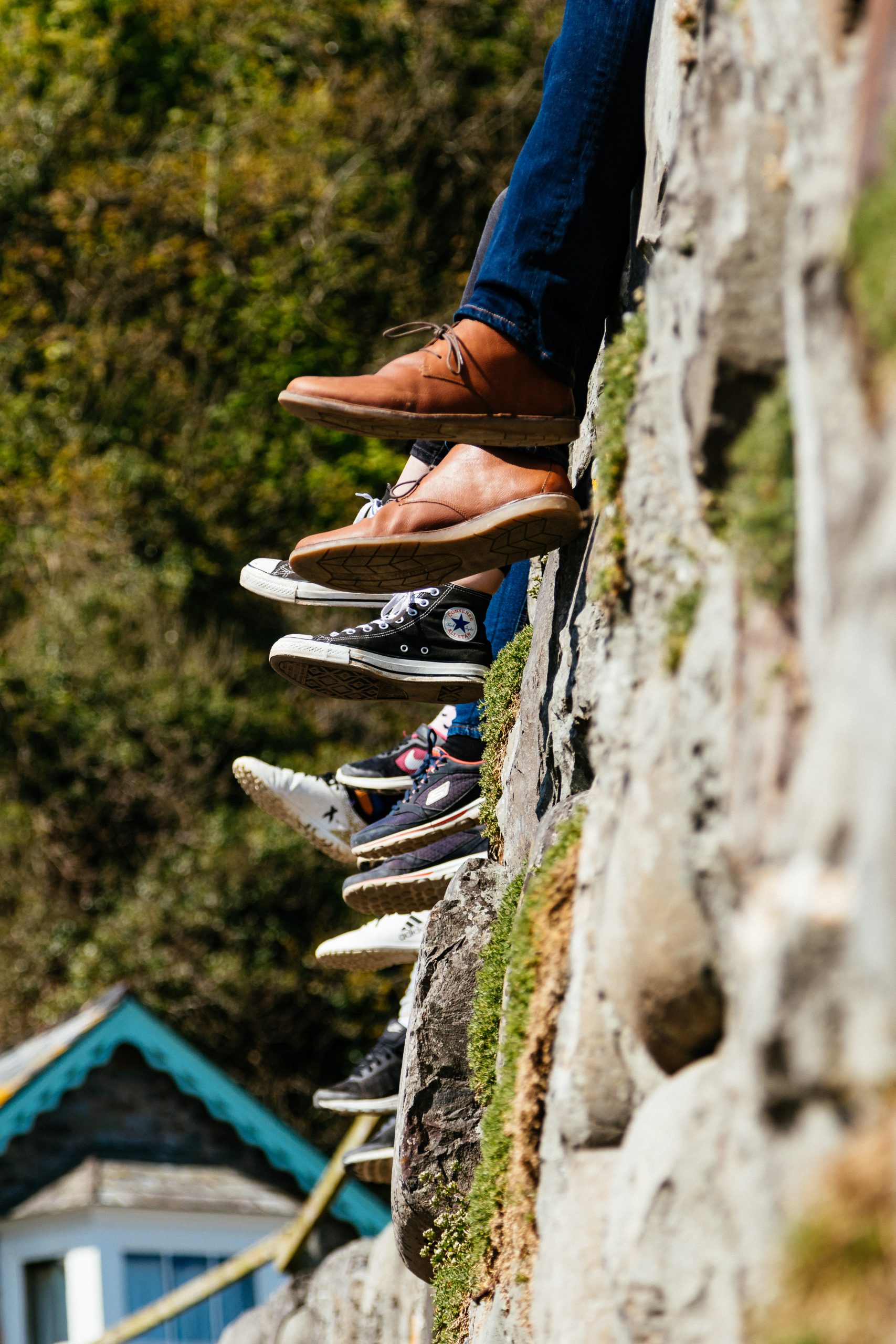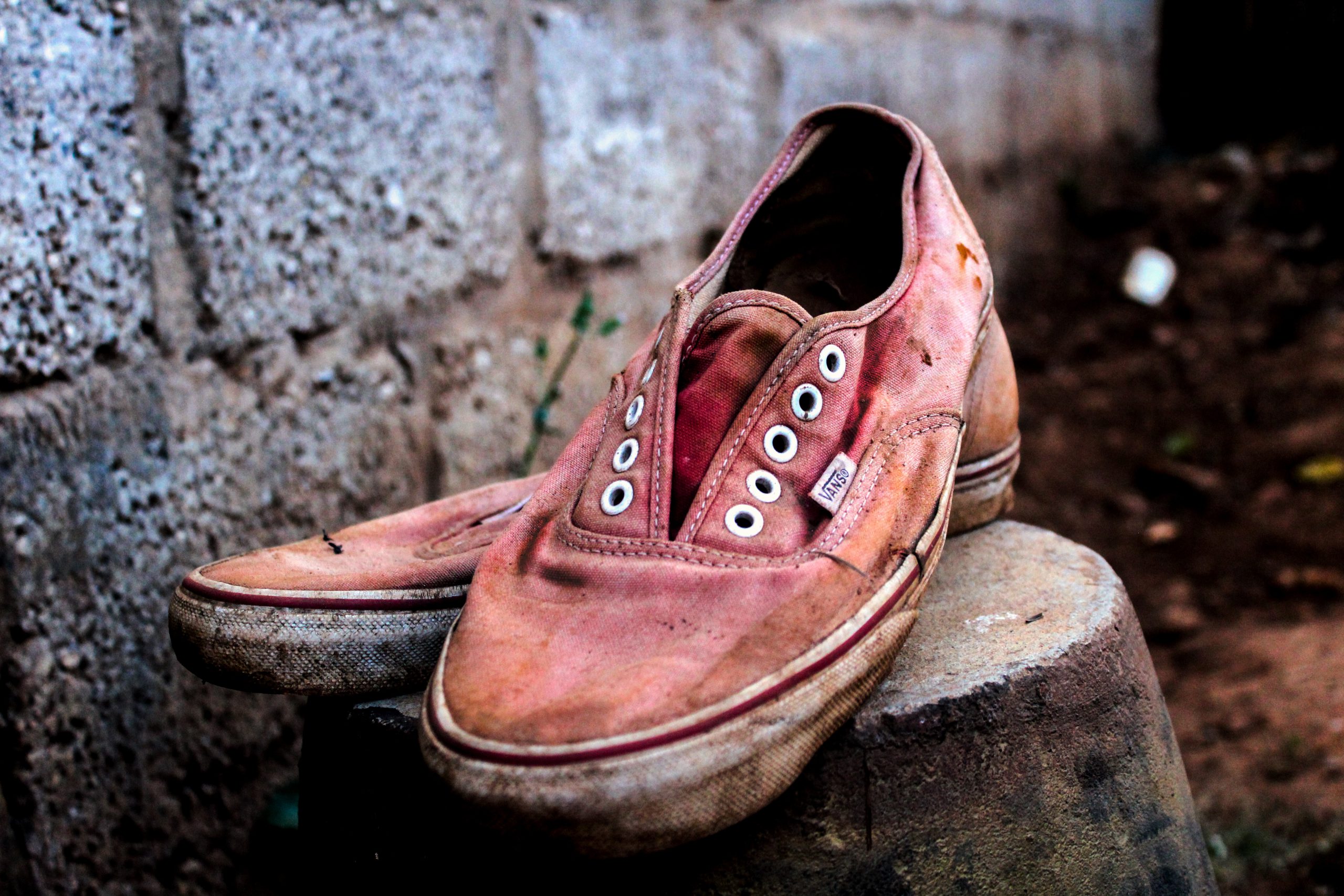Often we wonder what shoes we should wear when exercising. I thought it was a critical question and worth sharing in a blog post. Let’s find the best sneakers for different exercises because not every shoe fits every person. Doing different activities also requires different types of shoes.
So, what is the best sneaker for different kinds of exercise?
When I started 30 years ago as a trainer, the one shoe we had was a cross trainer, or what we called a gym shoe. The gym shoe was an all-around shoe that could be worn for weight training, aerobic classes, running, and just walking around in the streets. But there weren’t many different options as far as the type of shoe. Over the years, the fitness industry has become a big market, and shoemakers have realized that it’s time to make sport-specific shoes. But why is it important to choose different shoes for each activity?

Picture a running shoe. (Yes, the picture on the left is our running shoes AFTER a trail run) A running shoe is flexible, front and back, as you’re running or walking through the forward motion. It is cushioned on certain parts, and on other parts, it is more stable.
Now picture a tennis shoe. A tennis shoe is geared towards lateral movement, quick forward and backward movement, and needs quite a different structure to keep the foot supported but also responsive.
Those are significant differences between the shoes. Each activity that you do needs its own sneaker. Now I know shoes can get expensive, and you may think, “Maybe I can get away with wearing the same shoe for all these things, and I’ll be fine.”
Invest in good shoes and the health of your feet
When I met my husband many years ago, I was in the middle of marathon training, and he would always check out my “fancy shoes,” as he calls them. He says, “Whoa, how long are you gonna go for, hours?”
At this point, he was not a runner, so he was so enticed by my sports enthusiasm that he said, “I’m gonna come running with you.” He hadn’t run before and only occasionally played golf, but he said that he had a pair of “athletic shoes.” Once he pulled his shoes out, I looked at them and questioned his sanity, “these?!” “Yeah, look! They’re clean, and they work great!” he said.
They were a pair of Keds you may or may not remember. (If you don’t, they are white, flat shoes with no real bottom and aren’t meant for sports). They were beaten up, but they were sort of clean. He tried to run in them once before deciding it was time to get a new pair of shoes. It is essential to get good shoes, put your money towards a good pair of shoes, and investigate what type of shoe you need based on what activity you mostly do.
What are The Best Sneakers For Different Kinds Of Exercise?
Your Shoe Has To Fit Properly
Then, it is important to make sure the shoe fits correctly. People often think one brand is the “best” shoe, but the “best” sneaker e depends on the foot. A Nike shoe could fit one person but be terrible for another.

My secret is to go to a reputable shoe fitter at a sports-specific store. For example, I buy my running shoes at a running store, and my tennis-playing friends go to a tennis store for their shoes.
If you’re doing lots of cardio, you should have the person fitting your shoes check how you walk (your gate), whether you swing a foot or a leg, or if you turn your foot in or out when you move. An excellent store will put you through a walking test first, then ask what you plan on doing with the shoe and how often you wear them. Then, finally, you will try on different sneakers based on what they think is best.
Should you buy a new pair of sneakers without trying them on?
Do not buy the first pair of shoes you try on just because you don’t want to try on more and don’t buy them based on what they look like. Ideally, you would like them to fit and be fashionable, but it’s better to have a pair of shoes that fit correctly versus one that goes well with your sports clothes.
When you’re trying on your shoes, make sure that it’s comfortable. You shouldn’t need to spend hours and hours breaking in a shoe, tending to blisters, or whatever other problem. If you experience these problems, then take the sneaker back.
It may take a couple of trips to the store to find the right shoe, so don’t get discouraged. You want to get the right shoe. So remember, they need to measure your foot, evaluate your gate, and a little bit of an exercise history.
I Had Those Shoes For Years!

One of the things that I hear, too, is that people don’t know when their sneakers are worn out or when to trade them in. I have seen friends of mine who’ve shown me their sneakers and say, “Look, my shoes are great. It’s not dirty; it’s in great condition.” And then I look at the bottom of the shoe, and it’s worn away.
Check the quality of your sneakers
If you have uneven wear and tear on the bottom of the shoe or the outside of the sneaker, that means it’s time to get new sneakers. Your shoes could also be worn down if you start to get foot pain. Your sneakers may look okay, but you notice that your feet (or hips or knees) ache after a run. This could be a sign that it’s time for a new pair (especially if you’re putting miles and miles on your shoe).
Make sure to check the soles of your shoes
So if you have uneven wear and tear on the feet or the outside of the sneaker, that means it’s time to get new sneakers. And this is the most obvious way to tell that your shoes need to be replaced is when you look at the bottom of the shoe, and you have a profile, like the one of the car. And if it starts to wear down where the holes are no longer thick, where the pattern is worn down, and it almost gets flat and shiny, it is time to retire those shoes. But before that, and from my experience as a runner, I started to get foot pain when my sneakers were worn out. Put your hand in your shoe and feel the bottom to see if the shoe bed is worn down or flattened out.
How long does a shoe last in general? A running shoe can last up to 250 miles. So the length of time a sneaker can last depends on the miles you put on it. Walking shoes could potentially last you a year, but I go through 3 pairs of shoes a year with the amount I usually run.
If you want to keep track of how long your shoes last, try doing the next three things:
- Keep a log of how many miles you run or walk
- Check the inside fit and outside condition after 3 months for wear and tear
- Alternate your shoes: have two pairs of (potentially identical) shoes that you switch out every time you use them. This will reduce wear and tear on each pair and help your body stay in better condition
Such a great article and so very true!
Thank you so much for being here and I am glad I could help.
Heike
Comments are closed.